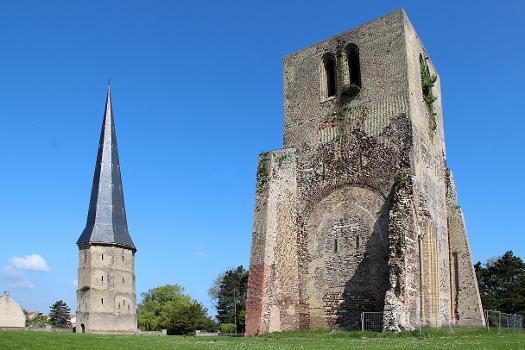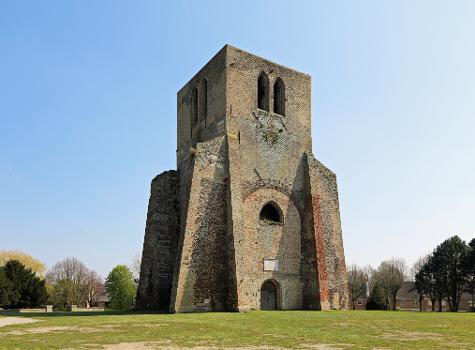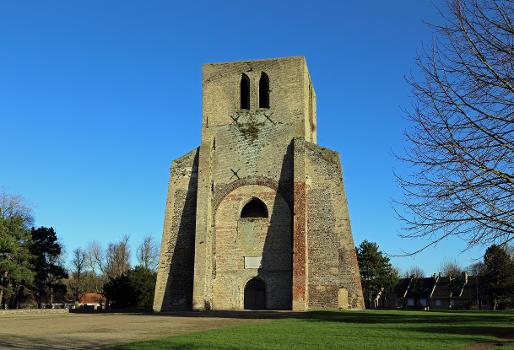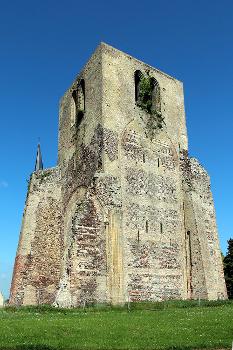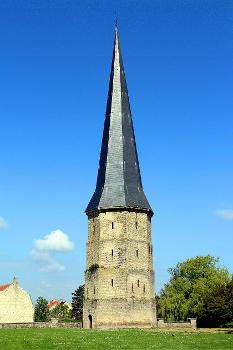General Information
| Name in local language: | Abbaye de Saint-Winoc |
|---|---|
| Beginning of works: | 13th century |
| Completion: | 18th century |
| Status: | partially demolished |
Project Type
| Function / usage: |
Monastery |
|---|---|
| Material: |
Masonry structure |
Awards and Distinctions
| 1946 |
tower
for registered users |
|---|---|
| 1926 |
tower
for registered users |
Location
| Location: |
Bergues, Nord (59), Hauts-de-France, France |
|---|---|
| Coordinates: | 50° 58' 4.86" N 2° 26' 20.21" E |
Technical Information
Materials
| towers |
masonry
|
|---|
Excerpt from Wikipedia
The Abbey of Saint Winnoc (French: Abbaye de Saint-Winoc) is a former monastery in Bergues, in the department of Nord in northern France. It traces its origins to the 7th century, and from the early 11th century became a Benedictine abbey and grew in wealth. The monastery was damaged by fire twice, and heavily rebuilt in the 18th century. Following the French Revolution, the abbey was disbanded, sold and most of the buildings dismantled. Only the former gate and two towers remain, as they were used as navigational aids.
Origins
The abbey traces its origins to the late 7th century, when a monastery dedicated to Saint Winnoc was founded by the abbot of the Abbey of Saint Bertin in Wormhout. In 899 Baldwin II, Margrave of Flanders, had the relics of Saint Winnoc moved to Bergues and constructed a new church there. Circa 1020 Baldwin IV, Count of Flanders had yet another church built in Bergues and the relics transported there. It was originally a collegiate church, but in 1022 Count Baldwin expelled the canons and turned the monastery into a Benedictine abbey. Until 1068, the abbot of the monastery was chosen from the ranks of the Abbey of Saint Bertin.
The new abbey was located on an important trade route and close to important commercial centres, and attracted plenty of pilgrims and patrons. It had also been generously bestowed with land and tithes by Count Baldwin, and thus quickly became a rich monastery. From an early date, it began issuing its own coins and received permission to hold a yearly market in Wormhout. The abbey also actively sought to enhance its attractiveness by acquiring the relics of two further saints, Oswald of Northumbria and Lewina, and by producing a written narrative of the reported miracles of Saint Winnoc.
Later history and dissolution
The abbey in the 17th century; illustration by Antoon Sanders in Flandria Illustrata, 1641.
In 1083 the entire abbey was destroyed in a fire, but appears to have been rebuilt by 1133. In that year the new abbey church was consecrated. The choir was substantially enlarged by works which were begun in 1288 and ended during the early 14th century. Another fire damaged the monastery in 1558.
The monastery was largely rebuilt in 1753–1770. The monastery was closed and sold in 1798 following the French Revolution and the ensuing suppression of monasteries. Soon thereafter it was almost entirely dismantled. Only the former gate of the monastery (later moved somewhat) and two towers were preserved, the latter because they served as daymarks, a form of navigational aid for sailors. The western tower collapsed in 1812, and was rebuilt the following year in an octagonal shape.
Text imported from Wikipedia article "Abbey of Saint Winnoc" and modified on 11 March 2024 according to the CC-BY-SA 3.0 license.
Participants
Currently there is no information available about persons or companies having participated in this project.
Relevant Web Sites
Relevant Publications
- Dictionnaire des églises de France, Belgique, Luxembourg, Suisse (Tome V-B). Artois, Flandre, Picardie. Robert Laffont, Paris (France), pp. 21.
- About this
data sheet - Structure-ID
20033048 - Published on:
04/11/2007 - Last updated on:
12/03/2024

